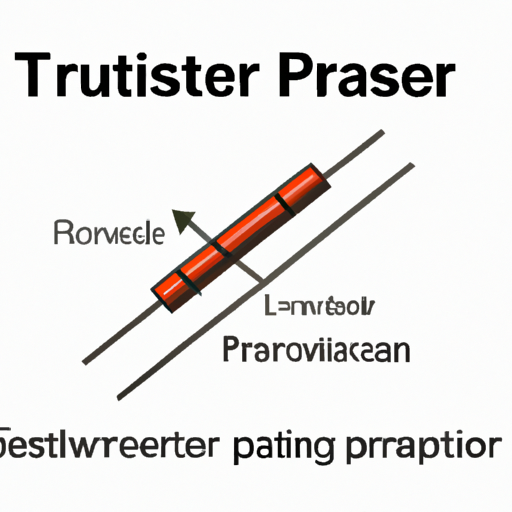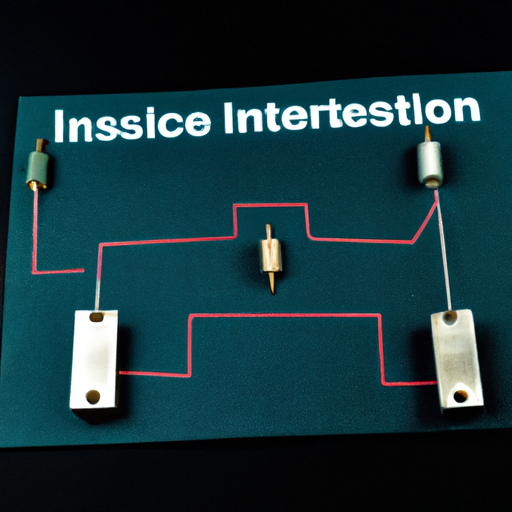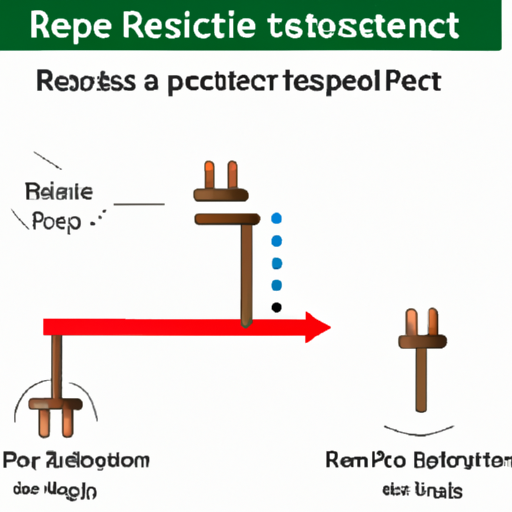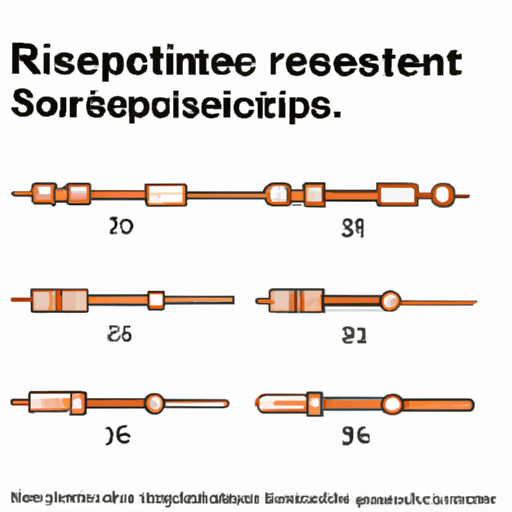What are the product characteristics of the main parameters of the resistor?
Product Characteristics of the Main Parameters of Resistors
I. Introduction
A. Definition of a Resistor
A resistor is a fundamental electronic component that limits the flow of electric current in a circuit. It is designed to provide a specific amount of resistance, measured in ohms (Ω), which is crucial for controlling voltage and current levels in various electronic applications.
B. Importance of Resistors in Electronic Circuits
Resistors play a vital role in electronic circuits by ensuring that components operate within their specified limits. They are used for various purposes, including voltage division, current limiting, and signal conditioning. Without resistors, circuits would be prone to damage due to excessive current or voltage, leading to malfunction or failure.
C. Overview of Key Parameters
Understanding the key parameters of resistors is essential for selecting the right component for a specific application. This blog post will explore the main characteristics of resistors, including resistance value, power rating, voltage rating, temperature coefficient, noise characteristics, frequency response, and reliability.
II. Basic Characteristics of Resistors
1. Definition and Measurement Units (Ohms)
The resistance value of a resistor is its ability to resist the flow of electric current. It is measured in ohms (Ω), with lower values allowing more current to pass through and higher values restricting current flow.
2. Tolerance and Its Importance
Tolerance refers to the allowable deviation from the specified resistance value. It is expressed as a percentage and indicates how much the actual resistance can vary from the nominal value. For example, a resistor with a nominal value of 100Ω and a tolerance of ±5% can have an actual resistance between 95Ω and 105Ω. Understanding tolerance is crucial for ensuring circuit performance, as it affects the accuracy of voltage and current calculations.
1. Definition and Measurement Units (Watts)
The power rating of a resistor indicates the maximum amount of power it can dissipate without overheating. It is measured in watts (W). Exceeding this rating can lead to resistor failure, which may cause circuit damage.
2. Impact on Circuit Design
When designing circuits, engineers must consider the power rating of resistors to ensure they can handle the expected power levels. This involves calculating the power dissipated using the formula P = I²R (where P is power, I is current, and R is resistance) and selecting resistors with appropriate ratings to prevent overheating.
1. Definition and Measurement Units (Volts)
The voltage rating of a resistor is the maximum voltage that can be applied across it without risking breakdown or failure. It is measured in volts (V).
2. Importance in Preventing Breakdown
Applying a voltage higher than the rated voltage can cause the resistor to fail, potentially leading to short circuits or damage to other components. Therefore, it is essential to select resistors with voltage ratings that exceed the maximum voltage expected in the circuit.
III. Types of Resistors
1. Carbon Composition Resistors
These resistors are made from a mixture of carbon and a binding material. They are inexpensive and widely used but have higher tolerances and noise levels compared to other types.
2. Metal Film Resistors
Metal film resistors offer better stability and lower noise levels than carbon composition resistors. They are made by depositing a thin layer of metal onto a ceramic substrate, providing precise resistance values and tighter tolerances.
3. Wirewound Resistors
Wirewound resistors are constructed by winding a metal wire around a ceramic or fiberglass core. They can handle high power ratings and are often used in applications requiring high precision and stability.
1. Potentiometers
Potentiometers are adjustable resistors that allow users to change the resistance value manually. They are commonly used in volume controls and other applications where variable resistance is needed.
2. Rheostats
Rheostats are a type of variable resistor used to control current in a circuit. They typically have higher power ratings and are used in applications such as dimmer switches and motor speed controls.
1. Thermistors
Thermistors are temperature-sensitive resistors that change resistance with temperature variations. They are widely used in temperature sensing and control applications.
2. Photoresistors
Photoresistors, or light-dependent resistors (LDRs), change resistance based on light intensity. They are commonly used in light-sensing applications, such as automatic lighting systems.
3. Varistors
Varistors are voltage-dependent resistors that change resistance with applied voltage. They are used for surge protection in circuits, helping to prevent damage from voltage spikes.
IV. Temperature Coefficient
A. Definition and Measurement
The temperature coefficient of a resistor indicates how much its resistance changes with temperature. It is typically expressed in parts per million per degree Celsius (ppm/°C).
B. Importance in Circuit Stability
A low temperature coefficient is desirable for applications requiring stable resistance over varying temperatures. High stability ensures that circuit performance remains consistent, even in fluctuating environmental conditions.
1. Positive Temperature Coefficient (PTC)
PTC resistors increase in resistance with rising temperature. They are often used in applications such as overcurrent protection.
2. Negative Temperature Coefficient (NTC)
NTC resistors decrease in resistance as temperature increases. They are commonly used in temperature sensing and compensation applications.
V. Noise Characteristics
A. Definition of Noise in Resistors
Noise in resistors refers to the unwanted electrical signals that can interfere with circuit performance. It is an important consideration in sensitive electronic applications.
1. Thermal Noise
Thermal noise, also known as Johnson-Nyquist noise, is generated by the random motion of charge carriers in a resistor. It is present in all resistors and increases with temperature and resistance value.
2. Shot Noise
Shot noise occurs due to the discrete nature of electric charge and is more prominent in semiconductor devices. It can affect the performance of circuits that rely on precise current measurements.
C. Impact of Noise on Circuit Performance
Excessive noise can lead to signal distortion and reduced accuracy in measurements. Engineers must consider noise characteristics when designing circuits, especially in audio and communication applications.
VI. Frequency Response
A. Definition and Importance
Frequency response refers to how a resistor behaves at different frequencies. It is crucial for applications involving alternating current (AC) signals, as resistors can exhibit different impedance characteristics at varying frequencies.
B. Effects of Frequency on Resistor Behavior
At high frequencies, parasitic capacitance and inductance can affect a resistor's performance, leading to deviations from its nominal resistance value. This can impact signal integrity in high-frequency circuits.
C. Applications in High-Frequency Circuits
In high-frequency applications, such as RF circuits and telecommunications, selecting resistors with appropriate frequency response characteristics is essential to ensure optimal performance and minimize signal loss.
VII. Reliability and Lifespan
1. Environmental Conditions
Temperature, humidity, and exposure to corrosive substances can significantly impact a resistor's lifespan. Resistors must be selected based on the environmental conditions they will face in their application.
2. Electrical Stress
Excessive voltage or current can lead to overheating and premature failure of resistors. Proper circuit design and component selection are crucial for ensuring reliability.
B. Testing and Quality Assurance
Manufacturers conduct rigorous testing to ensure resistors meet specified performance standards. Quality assurance processes help identify defects and ensure that only reliable components reach the market.
C. Importance of Reliability in Critical Applications
In critical applications, such as medical devices and aerospace systems, the reliability of resistors is paramount. Engineers must prioritize high-quality components to ensure safety and performance.
VIII. Conclusion
A. Summary of Key Parameters
Understanding the product characteristics of resistors, including resistance value, power rating, voltage rating, temperature coefficient, noise characteristics, frequency response, and reliability, is essential for selecting the right component for any electronic application.
B. Importance of Understanding Resistor Characteristics
A thorough understanding of these parameters enables engineers to design circuits that function reliably and efficiently, minimizing the risk of failure and ensuring optimal performance.
C. Future Trends in Resistor Technology
As technology advances, new materials and manufacturing techniques are being developed to enhance resistor performance. Innovations such as thin-film technology and smart resistors with integrated sensing capabilities are paving the way for more efficient and reliable electronic components.
IX. References
A. Academic Journals
- IEEE Transactions on Electron Devices
- Journal of Electronic Materials
B. Industry Standards
- International Electrotechnical Commission (IEC) Standards
- American National Standards Institute (ANSI) Standards
C. Manufacturer Specifications
- Datasheets from leading resistor manufacturers
- Application notes and technical guides from component suppliers
---
This blog post provides a comprehensive overview of the product characteristics of resistors, focusing on their main parameters. By understanding these characteristics, engineers and enthusiasts can make informed decisions when selecting resistors for their electronic projects.







